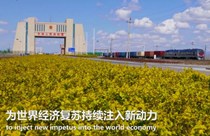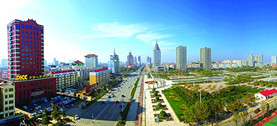Social Geography: a new window on a China in transition
Author : Source : Chinese Social Sciences Today 2014-01-30
In recent years, scholars of social geography have been active almost everywhere, from African enclaves in Guangzhou to upper-class neighborhoods, and from urban villages in Xi’an to the countryside around Chongqing. The aim of these scholars, who move amongst the objects of their own research, is to conduct research and collect data in order to understand and analyze China and its problems from the perspective of social space.
Following the tendency for geography to become more oriented towards human and social aspects, social geography is becoming an increasingly significant branch of the discipline. “Social geography has gone through three phases,” claims Professor Zhang Xiaolin, from the School of Geographical Sciences of Nanjing Normal University. The first phase went from the mid-19th century to the end of World War II, during which western geographers began paying attention to the study of social groups, focusing on the relationships between different social groups and their geographical environment. The second phase began after World War II, when in the wake of the social changes taking places in the western world, geography started being more focused on society and academics started to show more interest in social problems, such as slums and racial segregation. The third stage started in the 1980s, when new social currents begun to assert their influence on the discipline, and humanism, structuralism and post-structuralism were applied to social geographical studies, making them more diversified.
On the whole, it can be said that social geography in China is still stuck in the second of these three phases. Zhang Shulin, party secretary of the School of Geography and Tourism, Chongqing Normal University, explains that social geography in China is still a young discipline, and it possesses certain notable characteristics. First of all, it is problem-oriented: many social problems have arisen during China’s economic growth, and the study of these problems is broadening the development of social geography. Chinese social geography is also application-oriented: currently the study of social geography is mainly targeted at solving existing problems, stressing practical utilization. Finally, social geography in China tends to be locally oriented, with social geography laying more emphasis on the analysis of actual life in specific areas.
Since the 1990s social transition in China has been accelerating alongside growing social problems, which have become central topics of study for China’s social geography scholars. Ning Yuemin, director of the Center for Modern Chinese City Studies of East China Normal University, says that in common with the West, vulnerable groups also constitute a research focus for China’s social geography. These groups may include migrant workers caught between the dual urban-rural structure, those left unemployed because of economic restructuring and social changes, and low income groups.
Professor Li Zhigang, from the Geography and Planning School of Sun Yat-sen University, has conducted a thorough investigation of the African enclave of Xiaobeilu in Guangzhou. He told this reporter that there are currently many studies being conducted on China’s urban social spaces during this period of socioeconomic transition, but there are few studies on the enclaves of immigrants which are springing up due to globalization. Ethnic enclaves as social spaces deserve more attention, especially within research on residential divisions. Zhang also believes that there are plenty of academic studies on problems of urban social geography, while there is little concern for rural areas, and the restructuring of rural social spaces should be receiving more attention.
When it comes to the future of social geography, Zhang Shulin calls for making research more diverse. Current research is mostly focused on the description of particular phenomena, and the scopes and fields of research are often unbalanced. Research in this field should expand its scope and explore the underlying reasons and internal mechanisms which lie behind the phenomena it describes, coming up with effective solutions and policy measures.
It is also important to conduct multi-dimensional studies of China’s genuine problems, and analyze the laws and mechanisms which lie behind the socio-spatial differentiations of Chinese regions. To this end long-running follow-ups should be conducted in regions which display typical features, and a database built to analyze the temporal and spatial aspects of different social factors.
The next steps for the future are to continue to explore and improve the theoretical system of social geography, enhance theoretical innovation, experiment with different research methods, and widen research techniques. Only by employing an integral theoretical system can research in social geography be effectively applied to the reality of social development.
The Chinese version appeared in Chinese Social Sciences Today, No. 546, 8th January, 2014.
Chinese link: http://www.cssn.cn/xk/xk_rxqy/201401/t20140109_939214.shtml
Translated by Du Mei
Revised by Gabriele Corsetti
Ye Shengtao made Chinese fairy tales from a wilderness
Ye Shengtao (1894–1988) created the first collection of fairy tales in the history of Chinese children’s literature...
-
How northern ethnicities integrated into Chinese nation
2023-09-18
-
Mogao caves
2023-09-12
-
Mogao Grottoes as ‘a place of pilgrimage’
2023-09-12
-
Time-honored architectural traditions in China
2023-08-29
-
Disentangling the civilizational evolution of China
2023-08-28
-
AI ethics in science fiction
2023-08-23














 2011-2013 by www.cssn.cn. All Rights Reserved
2011-2013 by www.cssn.cn. All Rights Reserved